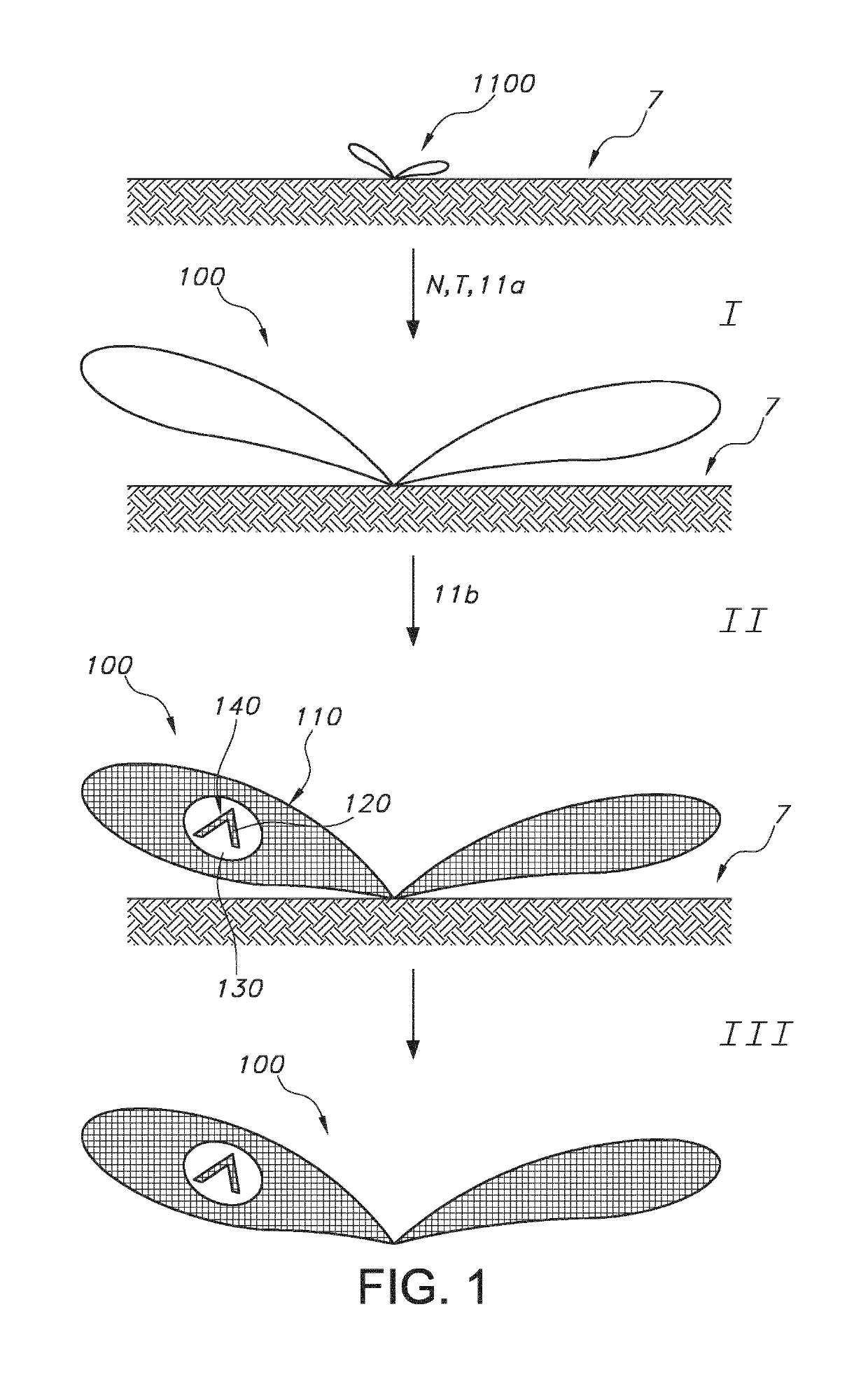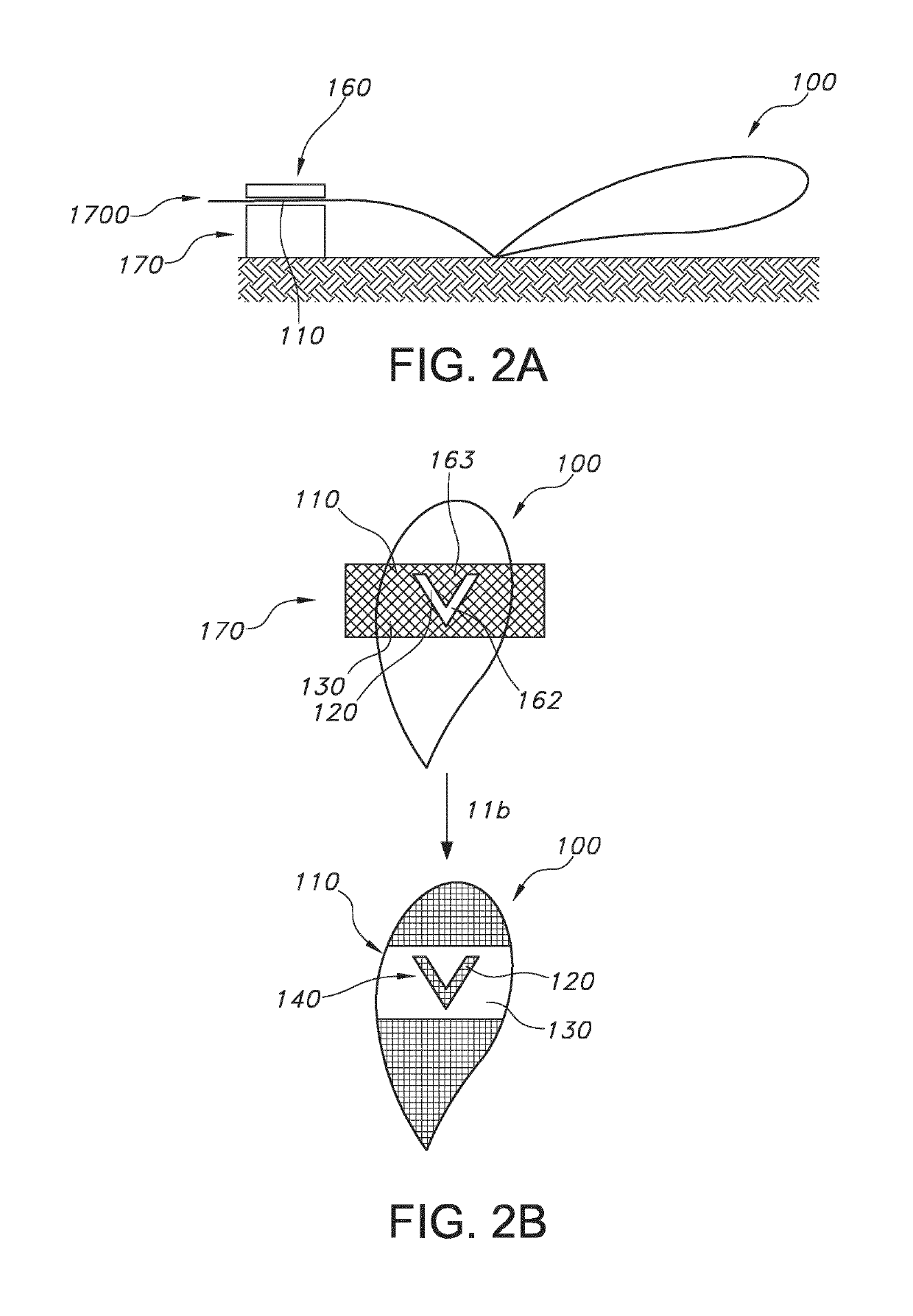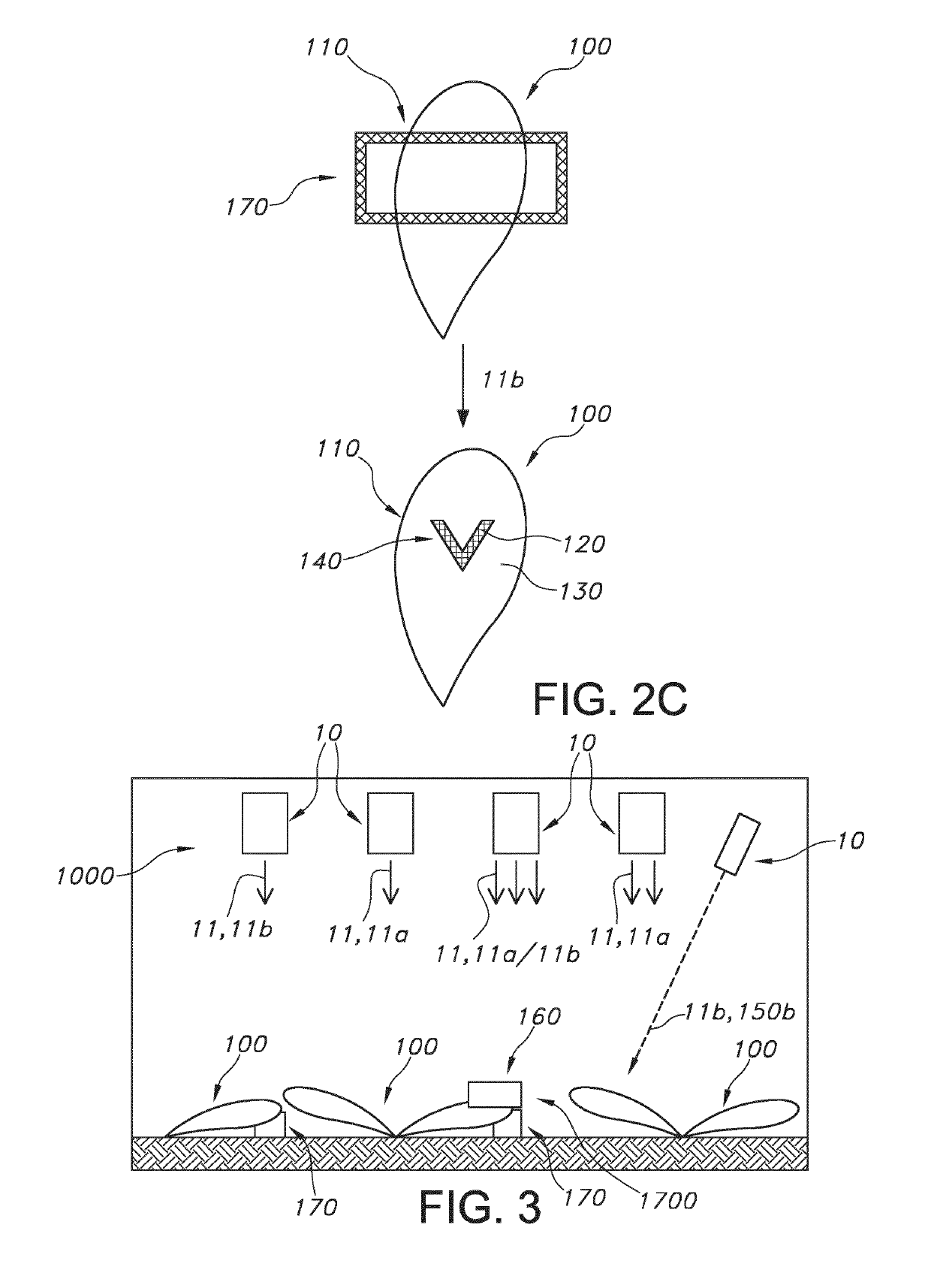Method to naturally brand a lettuce
a lettuce and natural technology, applied in the field of natural branding of lettuce, can solve the problems of inability to use the method for plants and fruits, short period, delicate timing, etc., and achieve the effect of easy washing
- Summary
- Abstract
- Description
- Claims
- Application Information
AI Technical Summary
Benefits of technology
Problems solved by technology
Method used
Image
Examples
example 1
[0084]In order to prevent coloration for a red type lettuce we should avoid sending a daily light integral (DLI) to the plant higher than 7 to 9 mol per day per m2 (value for lettuces). Above that value we may not guaranty a good contrast between the coloration part and the non-colored part later on of the lettuce.
[0085]In the example the experiment was done on lettuce grown under a DLI of 5 mol per day per m2 using a composition of red and white LED and an additional 15 to 25% of far red LED light (defined as 700-800 nm). This value is the average light level we would get in winter time in Europe. When the lettuce has grown enough to be harvested, we apply then a mask in order to get the pattern or branding imprint and change the light level to 14 mol / day per m2 using 50% red and 50% blue only preferably with a long photoperiod (>18 h) for long day plants.
[0086]A low DLI might slow down the growth of the lettuce. In order to find a good balance in terms of productivity versus color...
example 2
[0090]Red mustard was also grown under less than 8 mol / day / m2. After 4 to 5 weeks the mustard can be exposed to a higher photoperiod light (up to 24 h per day) and with a higher blue content (50% of total PAR light), the DLI is then in the range of 13-16 mol / day / m2. The red mustard needs at least 7 days to accumulate anthocyanin and make a significant color change.
[0091]The term “substantially” herein, such as in “substantially all light” or in “substantially consists”, will be understood by the person skilled in the art. The term “substantially” may also include embodiments with “entirely”, “completely”, “all”, etc.
[0092]Hence, in embodiments the adjective substantially may also be removed. Where applicable, the term “substantially” may also relate to 90% or higher, such as 95% or higher, especially 99% or higher, even more especially 99.5% or higher, including 100%. The term “comprise” includes also embodiments wherein the term “comprises” means “consists of”. The term “and / or” es...
PUM
 Login to View More
Login to View More Abstract
Description
Claims
Application Information
 Login to View More
Login to View More - R&D
- Intellectual Property
- Life Sciences
- Materials
- Tech Scout
- Unparalleled Data Quality
- Higher Quality Content
- 60% Fewer Hallucinations
Browse by: Latest US Patents, China's latest patents, Technical Efficacy Thesaurus, Application Domain, Technology Topic, Popular Technical Reports.
© 2025 PatSnap. All rights reserved.Legal|Privacy policy|Modern Slavery Act Transparency Statement|Sitemap|About US| Contact US: help@patsnap.com



